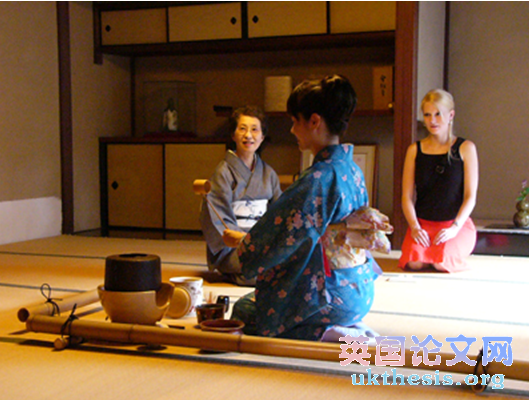蘭卡斯特大學 (Lancaster University):講述京都文化旅游發展的新趨勢

New trends
新趨勢
More than ever, people are nowadays interested in historical background, cultural identity, cultural meanings, meanings conveying historical heritage in the whole, and are searching very intensely for these issues. (Robinson et al., 1996b). In addition, the interaction between visitors and the place they visit, the participants seek to learn and experience the cultural and historic features of local people’s everyday life precisely because it is something that most people do not experience in their normal life, and also play a big part of cultural tourist’s interest. “The visitor is increasingly immersed in the experience and participates.” (Buhalis and Costa, 2006a, p.241).
超出任何時候,人們當今對歷史背景,文化認同,文化意思,在整個歷史遺產傳承意義感興趣,并非常強烈的搜索這些問題。(Robinson等,1996年b)。此外,游客和他們訪問的地方之間的互動,參與者尋求學習和體驗當地人們的日常的生活正是文化和歷史特點,因為是東西,大多數人沒有經歷在他們的正常生活,也發揮文化旅游的權益的重要組成部分。 “訪客越來越多地沉浸在體驗和參與。”(Buhalis and Costa, 2006a, p.241)。

Picture 2: Himeji Castle
圖2:姬路城堡
Source: United Nations World Tourism Organization (2010)
As it was stated before, tourism regards culture, and especially cultural heritage, as one of the fundamental motivation factors of culture tourists’ journeys. However, the motivation and the tourist behaviour are complicated, some types of cultural tourists may visit one site but for different reasons and seek different experiences. For example, as previously noted, the Asian youth travel to Japan for their cultural pilgrimage, they may visit Himeji Castle (see picture 2) which is located within the big Kyoto region, as many popular movies and TV dramas take place around this area, such as ‘篤姬’ (ATSUHIME). It also attracts purposeful and sightseeing cultural tourists because it is the most important historic castle in Japanese history, http://ukthesis.org/dissertation_sampleand has been recognized as national treasure, it is also the first Japanese heritage site which was registered on UNESCO's (United Nations World Tourism Organization) World Heritage list in 1993.
有人說,旅游文化,尤其是文化遺產方面,為文化的游客的行程基本激勵因素之一。然而,復雜的動機和旅游行為,某些類型的文化游客可能訪問一個網站,但出于不同的原因,并尋求不同的體驗。例如,如前所述,他們的文化朝圣亞洲青年到日本旅游,他們可能前往姬路城(參見圖2),這是位于大京都地區內,許多流行的電影和電視劇在這個區域附近的地方,如'篤姬'(篤姬)。這也吸引了有目的和觀光文化游客,因為它是在最重要的歷史性城堡在日本歷史上,并已經公認的國寶,它是也的第一個日本遺產網站被聯合國教科文組織的(美國聯合國世界旅游組織)世界遺產登記在1993年的名單。#p#分頁標題#e#
Although, everyday culture increasingly infuses cultural tourism patterns. The comprehensive tour play a key part of the overall cultural experience than simply heritage sites, though historic buildings visits and classical performances, traditional events and festivals remain an essential part of cultural tourism. The everydayness of culture, involves tourists spending large amounts of time walking around, experiencing the atmosphere of the city. “Cultural heritage tourists are active participants, learning and experiencing the ‘other’ they visit.” (Novelli, 2005, p.112) As a result, “heritage attractions can no longer be marketed as static products but must be dynamic experiences.” (Drummond and Yeoman, 2001, p.246)
雖然,日常文化越來越多地注入文化旅游模式。綜合旅游,發揮整體文化體驗的一個關鍵部分不是簡單地遺址,參觀歷史悠久的建筑和古典表演,傳統活動和節日雖然仍然是一個文化旅游的重要組成部分。日常性文化,包括游客,花費大量的時間四處走動,體驗這個城市的氣氛。 “文化遺產游客的積極參與者,學習和體驗的'其他'他們訪問”(諾維,2005年,第112頁)因此,“文物景點再也不能在市場上銷售為靜態的產品,但必須是動態的經驗。”(Drummond 和 Yeoman, 2001, p.246)
The culture of a region offers a rich resource of tourist experiences beyond solely the enjoyment of literature, architecture and museums, it is what imparts character to a tourist destination. Despite those traditional attractions still playing a key role in the cultural tourism market; Kyoto provides a wide range of learning and experiencing on its traditional intangible culture associated with traditional cultural features and combine special interests, activities and experiences. For example, the class of a Tea Ceremony while wearing a real kimono (see picture 1 and 2), the Art of Flower Arrangement (see picture 3), Japanese Shodo, or calligraphy (see picture 4); the traditional Kyoto style dancing; Kyoto Cuisine; especially, the experience at the Geisha community: the cultured district of Kyoto where Geisha and Maiko live, study and work; and the important traditional culture including Japanese music and dance are alive. The tourist also could learn how a traditional Geisha make up and dress up, and teaching is by highly skilled artists. Such products include elements of education, knowledge development, and internal exploration which become an important part in the Kyoto tourism market.
一個地區的文化提供了豐富的資源的旅游經驗,超越純粹的享受文學,建筑和博物館,它是什么賦予字符旅游目的地。盡管那些傳統景點,至今仍發揮著關鍵作用,在文化旅游市場;京都提供了廣泛的學習和體驗傳統非物質文化與傳統文化的特點,并結合特殊利益集團的活動和經驗。例如,茶道之類的,而穿著一個真正的和服(見圖1和2),插花藝術(參見圖3),日本書法,書法(參見圖4);傳統的京都風格的舞蹈;京都料理,特別是在藝伎界的經驗:京都的藝妓和舞妓住,學習和工作,以及重要的傳統文化,包括日本的音樂和舞蹈是活的養殖區。游客還可以學習傳統的藝妓如何化妝和打扮,教學是高度熟練的藝術家。此類產品包括教育,知識的發展,并成為在京都旅游市場的重要組成部分的內部探索。#p#分頁標題#e#
 Picture 1: Western visitors learn traditional Tea Ceremony in Teahouse
Picture 1: Western visitors learn traditional Tea Ceremony in Teahouse
圖1:西方游客在茶館學習傳統茶道
Source: Kyoto Travel Guide (2010)

Picture 2: Western visitors learn traditional Tea Ceremony in Teahouse
圖2:西方游客在茶館學習傳統茶道
Source: Kyoto Travel Guide (2010)

Picture 3: Western visitors experience the Art of Flower Arrangement
圖3:西方游客學習插花藝術
Source: Kyoto Travel Guide (2010)

Picture 4: Western visitors learn the Japanese Shodo, or calligraphy
圖4:西方游客學習日本書道,或書法
Source: Kyoto Travel Guide (2010)
While the appreciation of “high culture” remains as important focus for the Kyoto tourism industry, another new and powerful trend has been increasingly impacting on the cultural tourism demand. In recent decades, huge numbers of youths who have been influenced by the Japanese popular culture from other parts of Asia travel to Japan, those young visitors “prefer package guided tours to attractions” and they “mostly travel independently to Japan for their cultural pilgrimage.” (Cochrane, 2008, p.183)
Kyoto is a place that rich of traditional culture forms including many festivals, ceremonies which has long history and reputation. Specially the three famous festivals: Aoi Festival (Date: 15 May), Gion Festival (Date: 1-31 July), Jidai Festival (Date: 22 October) and Gozan Fire Festival (Date: Starting from 8pm on 16th August). Those festivals have become natural parts of the national culture, are constructed as tourist attractions that lure tourists to destinations. Event attendance are the outcome of tourists’ motives, as well as marketing, destination features and contingency factors such as money, health and time relating to the traveller’s choice of behaviour.
京都是一個富有豐富的傳統文化形式的地方,包括許多節日,慶典,具有悠久的歷史和聲譽。特別是三個著名的節日:葵祭(日期:月15日),祗園祭(日期:1-317月),時代祭(日期:10月22日)和五山送火節(日期:8月16日,從晚上8點開始)。這些節日已成為國家文化的自然部分,構建旅游景點,吸引游客到目的地。事件出席旅游者的動機,以及市場推廣,目標特征和權變因素,如金錢,健康和時間有關旅客的選擇行為的結果。